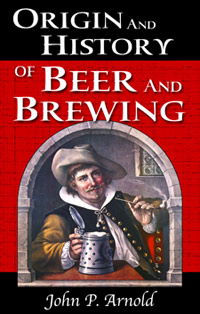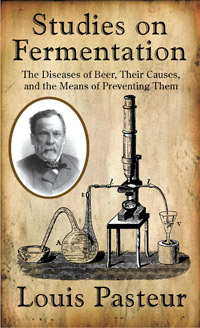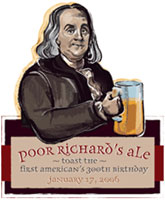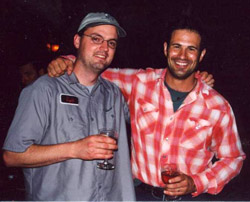Cheers to the Wall Street Journal for a deciphering the code large brewers use in listing “freshness dates.” (Unfortunately, WSJ is a paid site, so we only linked to the front page).
It begins: “A loaf of bread has it. So does a carton of milk. But if you’re looking for the expiration date on a bottle of beer, forget about it — for many brewers, that information is a closely guarded secret.”
But reporter Bruce Knecht reveals some of the secrets. For example:
Take Sapporo, a Japanese beer we purchased in Los Angeles, which was imprinted with “K1205FL” on the bottom. Lost in translation? Well, the code indicates the beer was made Oct. 12, 2005. In the case of Sapporo, the first letter represents the month of manufacture: “A” for January, “B” for February and so on, through “M” for December. (As if the system weren’t complicated enough, this one, like many of these codes, has an extra twist: The month code skips over the letter “I” and uses “J” for September.) The next two digits, “12,” refer to the day of the month, and the two numbers after that, “05,” are the last two digits of the year.
Corona uses two different alphabetical codes. The year, the first character, is coded from A for 2001 to F for 2006, while the months go from L for January to A for December. The day of the month is expressed numerically. So the bottle we bought with the code “EE08” was made Aug. 8, 2005. The company doesn’t publicly disclose its code, but people familiar with the company’s practice confirm our translation.
Track down a copy of the Weekend edition if you can, or find it in your local library. The story includes a chart telling you how to read the code on 15 beers, ranging from Anchor to Tecate.
Although “skunky beer” is at the center of the story, it doesn’t exactly explain how that ties into freshness. So just in case you were wondering . . .
Few beer tasting terms are more descriptive or straightforward than “skunky.” Quite simply, a skunky beer emits an aroma it didn’t have when it left the brewery.
The smell is the product of the chemical reaction that takes place in the bottle when bright light strikes the hops, creating what’s technically known as “light struck” beer. The reaction is stronger with paler and hoppier beers. The resulting chemical is identical to that in a skunk’s defense system, and light-struck beer puts off one of the most powerful aromas around.
Green and clear bottles do little to protect a beer from skunking, and while dark brown bottles are much better they are far from perfect. Because many of the best known imports come in clear or green bottles consumers have come to associate a skunky aroma with imported, often more expensive beer. That doesn’t mean their brewers intended them to taste that way.
The brighter the light and the longer bottles sit in that light the stronger the skunky smell will be. Even dark brown bottles won’t guard a beer from the bright fluorescent lights popular in grocery stores and many other beer retail outlets for very long.
You don’t have to settle for that beer. In some stores you’ll see six-packs sitting on tops of cases. Don’t grab that one, but get your beer from inside the case. A sealed case is even better. If you want beer from the cooler don’t be shy about asking if there are unopened cases in the cooler and buying a six-pack from one of those.
Buying beer that has been kept out of the light gives you a better chance of getting a “skunk free” beer. It’s up to you to keep it that way — mostly by continuing to keep it out of direct light — until you drink it.



 Perhaps something like Poor Richard’s Ale, the beer that officially goes on tap tomorrow to commemorate the 300th anniversary of Franklin’s birth (Jan. 17). OK, some of the 100 or so breweries across the country that brewed this special beer already have it on at others the beer isn’t quite ready to serve, but the Tuesday is the day to raise a glass to Ben.
Perhaps something like Poor Richard’s Ale, the beer that officially goes on tap tomorrow to commemorate the 300th anniversary of Franklin’s birth (Jan. 17). OK, some of the 100 or so breweries across the country that brewed this special beer already have it on at others the beer isn’t quite ready to serve, but the Tuesday is the day to raise a glass to Ben. What the fivesome of Calagione, Tomme Arthur of Port Brewing, Vinnie Cilurzo (on the left of Calagione) of Russian River Brewing, Adam Avery of Avery Brewing and Rob Todd of Allagash Brewing means by introduce is actually serving samples of their beers. Each will offer two beers at a variety events.
What the fivesome of Calagione, Tomme Arthur of Port Brewing, Vinnie Cilurzo (on the left of Calagione) of Russian River Brewing, Adam Avery of Avery Brewing and Rob Todd of Allagash Brewing means by introduce is actually serving samples of their beers. Each will offer two beers at a variety events.